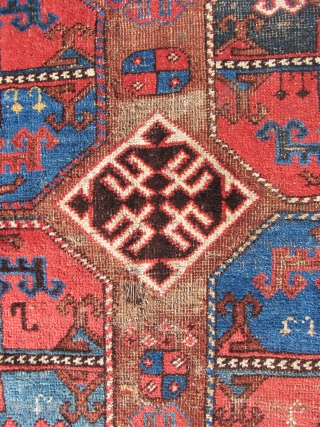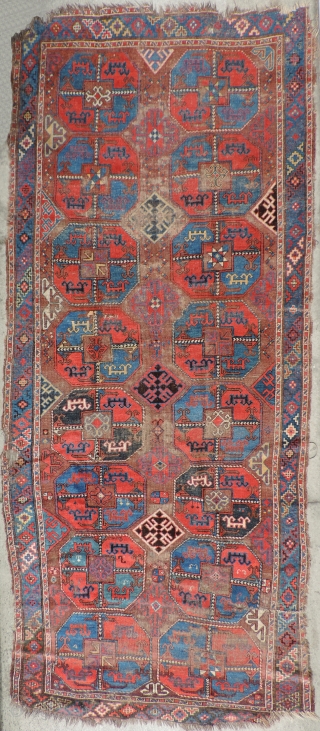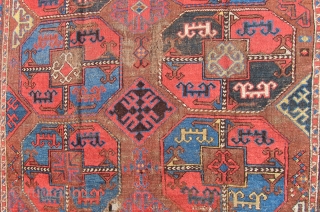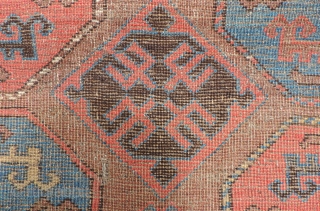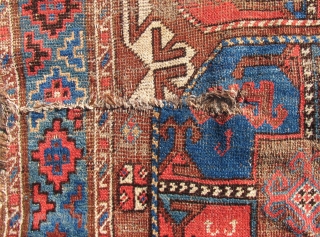Back
Animal Gul Carpet. Possibly early 19th century (or before). Rare and collection worthy, this rug has the supple, floppy handle of an old tribal piece. Although it has the depressed warp structure usually found in these rugs, it does not have the stiff, corrugated (Bidjar-like) handle of the later commercial pieces, made in the second half of the 19th century. These can barely be folded. Rugs that cannot be folded for easy transport were not made for nomadic/yurt dwelling tribal people. The supple feel of this piece taken together with the various design elements and colors found in the rug indicate an early attribution. The field color appears to be slightly corrosive. The range of colors, including an early steely green color and the many improvised and playful tertiary design elements further point to a tribal origin for this piece. In the Russian literature, rugs employing this type of animal gul have been referred to as "Turkmen/Uzbek". This is a good old Central Asian rug, of a rare early type. It is older than nearly all other examples extant from my experience. True, it shows its age, but it was made to be used in a nomadic/pastoral setting rather than the urban setting of its later relatives. Size: 56 x 132 inches.
price:
SOLD
- Home
- Antique Rugs by Region
- Category
- Profiles
- Post Items Free
- Albums
- Benaki Museum of Islamic Art
- Budapest: Ottoman Carpets
- Gulbenkian Museum
- Islamic Carpets. Brooklyn
- Islamic Textiles. Brooklyn
- Konya Museum: Rugs
- MKG, Hamburg
- MMA: Caucasian Carpets
- MMA: Mamluk Carpets
- MMA: Mughal Indian Carpets
- MMA: Ottoman Carpets
- MMA: Safavid Persian Carpets
- MMA: Turkmen Rugs
- McCoy Jones Kilims
- Ottoman textiles. Met
- Philadelphia Museum
- Rugs and Carpets: Berlin
- Seljuqs at the Met
- TIEM, Istanbul: Carpets
- V&A: Classical Carpets
- Vakiflar Carpets: Istanbul
- Baluch Rugs: Indianapolis
- Gallery Exhibitions
- Jaf an Exhibition
- Alberto Levi Gallery
- Andean Textile
- Christie's London: 2016
- Francesca Galloway
- HALI at 40
- ICOC Washington, DC 2018
- Jajims of the Shahsavan
- London Islamic Week April, 2018
- Mongolian Felts
- Navajo Rugs: JB Moore
- Persian Piled Weavings
- SF Tribal & Textile Art Show 2020
- SF Tribal 2019
- Sotheby's: C. Alexander
- Turkish Prayer Rugs
- Turkmen Main Carpets ICOC 2007












